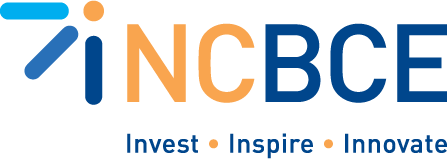Essential Questions
- What kind of database should I use for the job I’m working on?
- How does knowing database structures help me use them more efficiently and effectively?
- What’s the best way to find the information I want from a database?
Big Ideas
Databases can be as simple as your address list or can be multifaceted with numerous data tables connecting to each other to share information based on a single request. You should understand how the databases you use are organized so you can correctly search and find the information you need from them. Or you can use your knowledge about the structure of databases to accurately input information you want to find later, like all of the information and examples you are adding to your Help Desk knowledge base. Maybe it should become a searchable database?
Connection to Student Lives
You use databases all the time, whether you realize it or not. Databases are powerful tools that store, manipulate, and share data. If you’ve ever shopped online, played fantasy football, done online banking, watched a recommended show from Netflix or Hulu, or looked up the weather on your phone, you’ve used a database.
Framing Problem
Students must be able to access, input and modify data, and run reports from databases that are relevant to their work, such as an online trouble-ticket system.
Cornerstone Assessment
Students will design and create a simple database, preferably one that is relevant to their work with the Help Desk.
DPI Standards
- 7.01 Understand database concepts and the purpose of a database.
- 7.02 Understand various database structures.
- 7.03 Understand methods used to interface with databases.
CompTIA Standards
- 3.4 Explain methods of application architecture and delivery models
- 5.1 Explain database concepts and the purpose of a database
- 5.2 Compare and contrast various databae structures
- 5.3 Summarize methods used to interface with databases
Knowledge
- What a database is and examples of databases
- The purpose and different types of databases
- The difference between a flat file and a database
- Characteristics of relational vs. non-relational databases
- Methods for relating databases
- Methods for accessing a database and importing or exporting data
Skills
- Describe databases and explain the purpose of a database
- Use an existing database (such as a trouble-ticket system or Help Desk knowledge base, if it is in database form)
- Create a simple database (such as contact information for Help Desk members)
Vocabulary
- Application architecture models (One tier, Two tier, Three tier, n-tier) -
- Database access methods (Direct/manual access, Programmatic access • User interface/utility access, Query/report builders) -
- Export/import (Database dump, Backup) -
- Flat file vs. database (Multiple concurrent users, Scalability, Speed, Variety of data) -
- Non-relational databases (Key/value databases, Document databases) -
- Records -
- Relational databases (Schema, Tables, Rows/records, Fields/columns, Primary key, Foreign key, Constraints) -
- Relational methods - Data manipulation [Select, Insert, Delete, Update]; Data definition [Create, Alter, Drop, Permissions])
- Storage (Data persistence) -
- Structured vs. semi-structured vs. non-structured (unstructured) -
- Usage of database (Create, Import/input, Query, Reports) -
Supporting Vocabulary
- Columns
- Comma Separated Values (CSV)
- Field
- Garbage In, Garbage Out (GIGO)
- Metadata
- Relational Database Management Systems (RDBMS)
- Rows
- Structured Query Language (SQL)
- Tables
Weekly Map
Monday
Introduction to problem (creating a database)
Online Pre-assessment (available for student practice, as well)
Team meetings to develop project plan and goals
Tuesday
Review content resources with whole group
Small group and independent exploration of resources
Contribute to team project
Wednesday
Hands-on exploration with IT professionals (exploring the trouble-ticket database)
Team progress check with supervisor (using project plan)
Thursday
Hands-on exploration with IT professionals (creating a database)
Small group and independent exploration of resources
Contribute to team project
Friday
Team progress check with supervisor or sharing of progress with whole group
Online post-assessment
Monitor progress and adjust project plan as necessary
Lesson Ideas
Students reform or generate new teams to review Unit 2.4 in their textbook. The students collaborate on a Frayer-type digital presentation that records and illustrates key vocabulary and concepts in the Units. Students contribute to these files throughout the semester to prepare for the CompTIA certification exam and to contribute to the Help Desk knowledge base.
Students are charged with learning how to create a database that is relevant to their Help Desk work or other school/district need. Lab 10: Creating and Using a Database in Unit 2.4 provides detailed instructions for creating a customer database using apache Open Office as an example of a relational database. Whether they replicate the example in the lab or not, student teams should design the database structure then create the actual database.
Technicians present a database that is used in the school or district, such as the backend of an online trouble-ticket system. While students may not be able to modify the database, they can learn how to input and modify data and generate reports using the system, preferably one that will help them in their Help Desk work. Students generate documentation from their experiences that is used to support the might Help Desk throughout the semester.
Potential Resources
The Official CompTIA ITF+ Instructor’s Manual and Student Guide: Units 2.4
Frayer Diagram Template (slide deck, document, or other)
ITProTV
- Database Concepts | CompTIA IT Fundamentals+ (FC0-U61) (32:09)
- Querying a Database | CompTIA IT Fundamentals+ (FC0-U61) (32:25)
- Table Design | CompTIA IT Fundamentals+ (FC0-U61) (31:18)
Khan Academy
- Welcome to SQL course (discusses and provides practice for creating simple relational database functionality)
Technology Gee
- Methods of Application Architecture & Delivery Models | CompTIA IT Fundamentals FC0-U61 | 3.4 (12:53)
- Purpose of a Database | CompTIA IT Fundamentals FC0-U61 | 5.1 (17:13)
- Various Database Structures | CompTIA IT Fundamentals FC0-U61 | 5.2 (11:41)
- Interfacing with Databases | CompTIA IT Fundamentals FC0-U61 | 5.3 (9:04)
